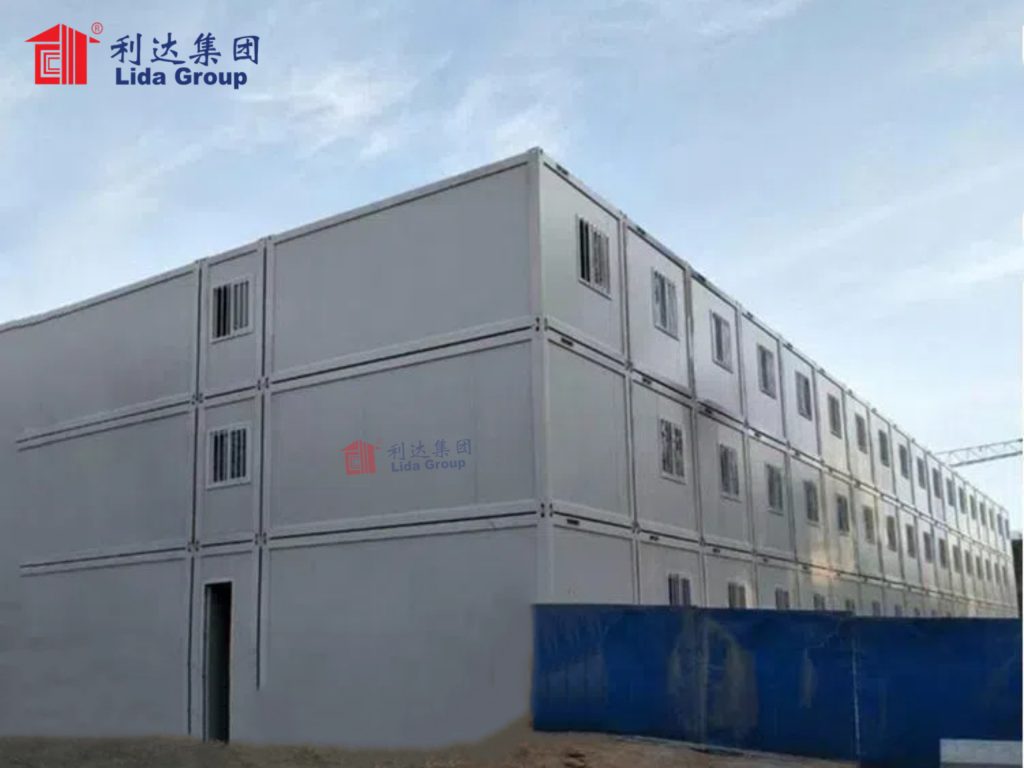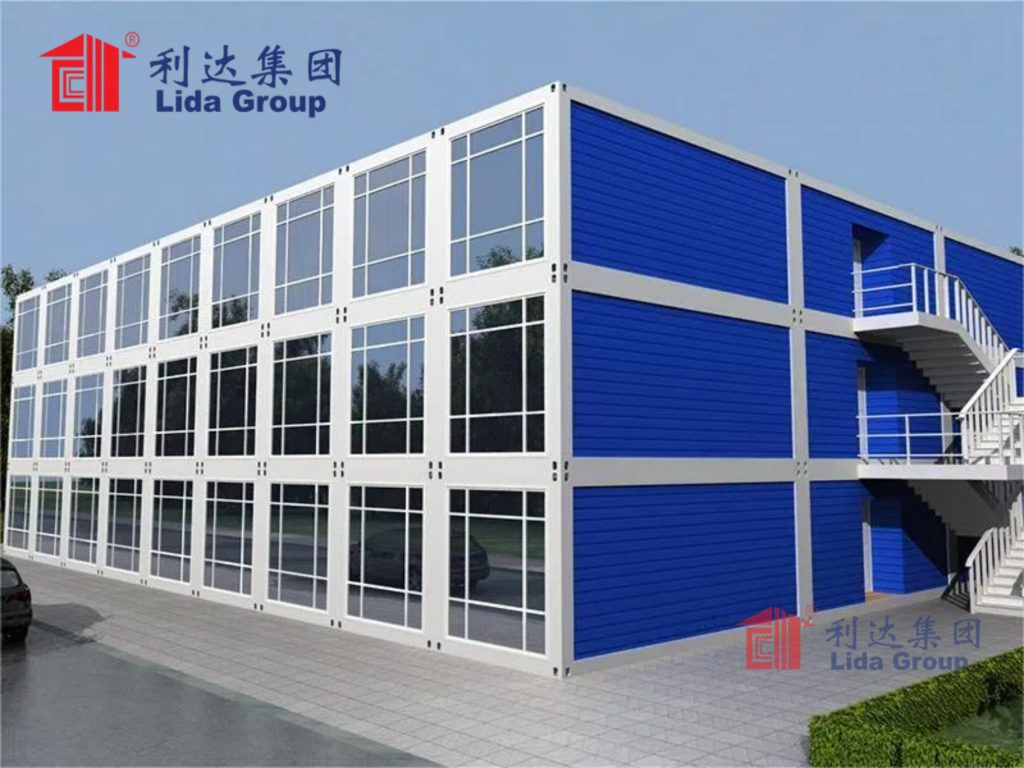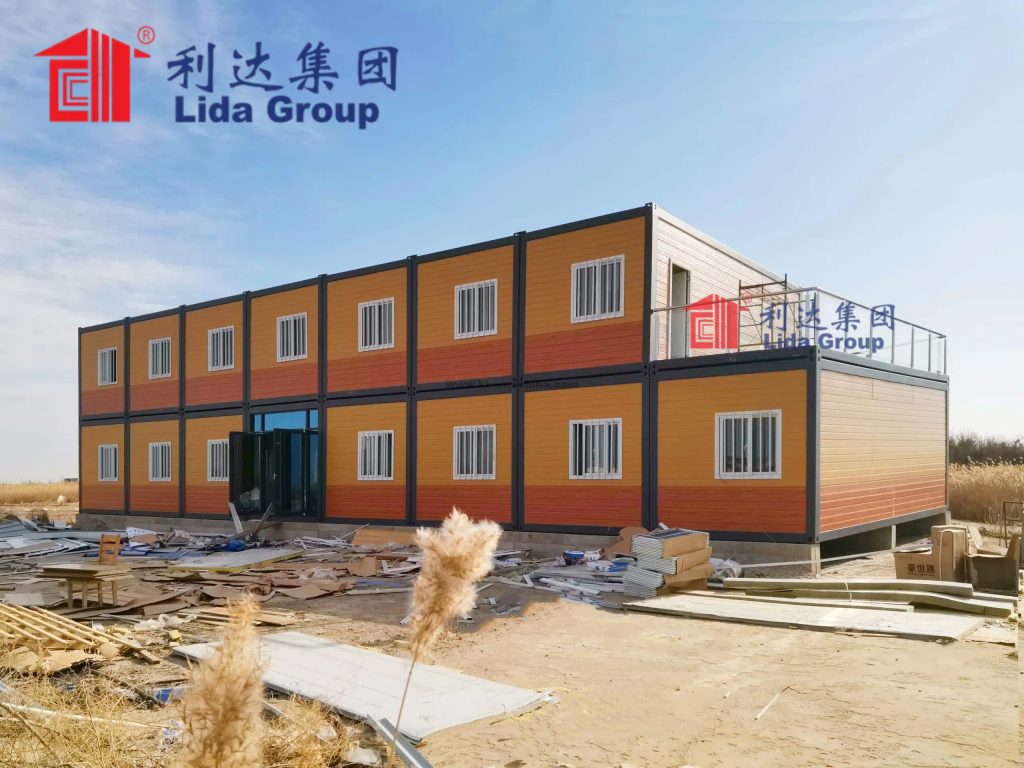**Introduction**
In today’s fast-paced, urbanized world, finding ways to incorporate greenery into our living spaces has become more important than ever. For those living in homes made from shipping containers or other steel-clad structures, creating a lush outdoor space might seem challenging. However, container gardening offers a versatile and accessible solution to bring life and color to even the most industrial environments. Whether you have a small balcony, a rooftop, or a compact backyard, container gardening allows you to transform your steel-clad outdoor space into a vibrant oasis.
This article explores the art of container gardening, providing creative planting ideas and practical tips to help you green up your outdoor space. From selecting the right containers and plants to designing stunning arrangements, we’ll guide you through the process of creating a thriving container garden that complements your steel-clad home. Whether you’re a seasoned gardener or a beginner, this guide will inspire you to embrace the beauty of nature in your outdoor space.
—
**Why Choose Container Gardening?**
Container gardening is an ideal solution for those with limited space or unconventional outdoor areas, such as steel-clad homes. Here are some of the key benefits of container gardening:
1. **Versatility**: Containers can be placed anywhere—on balconies, rooftops, patios, or even hung from walls. This flexibility makes them perfect for small or unconventional spaces.
2. **Accessibility**: Container gardening is easy to start and maintain, making it accessible to beginners and experienced gardeners alike.
3. **Customization**: You can choose containers and plants that match your style and space, creating a personalized outdoor environment.
4. **Mobility**: Containers can be moved around to optimize sunlight exposure or change the layout of your outdoor space.
5. **Sustainability**: Growing your own plants, herbs, and vegetables reduces your carbon footprint and promotes a greener lifestyle.
—
**Step 1: Choosing the Right Containers**
The first step in container gardening is selecting the right containers. The type of container you choose will impact the health of your plants and the overall aesthetic of your outdoor space.
### **1.1 Material Options**
Containers come in a variety of materials, each with its own advantages:
– **Terracotta**: Classic and breathable, terracotta pots are ideal for plants that prefer well-drained soil. However, they can be heavy and prone to cracking in cold weather.
– **Plastic**: Lightweight and affordable, plastic containers are easy to move and come in a wide range of colors and styles. Look for UV-resistant options to prevent fading.
– **Metal**: Metal containers, such as galvanized steel or aluminum, complement the industrial aesthetic of steel-clad homes. Ensure they have drainage holes to prevent waterlogging.
– **Wood**: Wooden planters add a natural, rustic touch to your outdoor space. Use rot-resistant woods like cedar or redwood for durability.
– **Fabric**: Fabric grow bags are lightweight, breathable, and portable. They’re ideal for root vegetables and plants that require good drainage.
### **1.2 Size and Depth**
Choose containers that are appropriate for the plants you want to grow. Larger plants, such as tomatoes or shrubs, require deeper containers, while smaller plants, like herbs or flowers, can thrive in shallower pots.
### **1.3 Drainage**
Proper drainage is essential for healthy plants. Ensure your containers have drainage holes at the bottom to prevent water from pooling and causing root rot. If your chosen container doesn’t have holes, you can drill them yourself.

**Step 2: Selecting the Right Plants**
The success of your container garden depends on choosing plants that are well-suited to your climate, space, and level of gardening experience.
### **2.1 Consider Your Climate**
Choose plants that thrive in your local climate. For example, succulents and cacti are ideal for hot, dry climates, while ferns and hostas prefer cooler, shadier environments.
### **2.2 Sunlight Requirements**
Assess the amount of sunlight your outdoor space receives. Full-sun plants, such as tomatoes and marigolds, need at least six hours of direct sunlight per day, while shade-loving plants, like impatiens and begonias, thrive in low-light conditions.
### **2.3 Plant Size and Growth Habits**
Select plants that fit the size of your containers and won’t outgrow their space. Consider the growth habits of each plant—some, like trailing vines, are perfect for hanging baskets, while others, like upright shrubs, are better suited for larger pots.
### **2.4 Mix and Match**
Create visually appealing arrangements by combining plants with different heights, textures, and colors. For example, pair tall grasses with trailing vines and colorful flowers for a dynamic display.

**Step 3: Designing Your Container Garden**
A well-designed container garden enhances the beauty of your outdoor space and creates a cohesive look. Here are some tips for designing stunning arrangements:
### **3.1 Thriller, Filler, Spiller**
Use the “thriller, filler, spiller” technique to create balanced and visually interesting arrangements:
– **Thriller**: Choose a tall, eye-catching plant as the focal point, such as a ornamental grass or a flowering shrub.
– **Filler**: Add medium-sized plants to fill in the space around the thriller, such as begonias or petunias.
– **Spiller**: Include trailing plants that spill over the edges of the container, such as ivy or sweet potato vine.
### **3.2 Color Coordination**
Choose plants with complementary colors to create a harmonious look. For example, pair purple petunias with yellow marigolds for a vibrant contrast, or stick to a monochromatic palette for a more subdued effect.
### **3.3 Vertical Gardening**
Maximize your space by incorporating vertical gardening techniques. Use trellises, wall-mounted planters, or hanging baskets to add greenery to walls and fences.
### **3.4 Grouping Containers**
Group containers of different sizes and heights to create a layered effect. Place larger containers at the back and smaller ones at the front for a sense of depth.
—
**Step 4: Planting and Caring for Your Container Garden**
Once you’ve chosen your containers and plants, it’s time to start planting. Follow these steps to ensure your container garden thrives:
### **4.1 Prepare the Containers**
Fill your containers with high-quality potting soil, which provides the nutrients and drainage your plants need. Avoid using garden soil, as it can compact in containers and hinder root growth.
### **4.2 Plant Your Garden**
Arrange your plants in the containers according to your design plan. Gently loosen the roots before planting, and ensure each plant has enough space to grow. Water thoroughly after planting to help the roots establish.
### **4.3 Watering**
Container plants require more frequent watering than those in the ground, as they dry out faster. Check the soil daily and water when the top inch feels dry. Use a watering can or hose with a gentle spray to avoid disturbing the soil.
### **4.4 Fertilizing**
Feed your plants with a balanced, water-soluble fertilizer every two to four weeks to promote healthy growth. Follow the instructions on the fertilizer package for the correct dosage.
### **4.5 Pruning and Deadheading**
Regularly prune your plants to remove dead or damaged leaves and encourage new growth. Deadhead spent flowers to prolong blooming and keep your garden looking fresh.

**Step 5: Creative Planting Ideas for Steel-Clad Spaces**
Here are some creative ideas to inspire your container garden and enhance your steel-clad outdoor space:
### **5.1 Herb Garden**
Create a functional and fragrant herb garden by planting basil, rosemary, thyme, and mint in small pots or a vertical planter. Place the containers near your kitchen for easy access while cooking.
### **5.2 Succulent Arrangement**
Succulents are low-maintenance and perfect for small spaces. Arrange a variety of succulents in a shallow, wide container for a modern, minimalist look.
### **5.3 Flowering Display**
Brighten up your outdoor space with a colorful display of flowering plants, such as petunias, geraniums, and pansies. Mix and match colors for a vibrant effect.
### **5.4 Vegetable Garden**
Grow your own vegetables in containers, such as tomatoes, peppers, and lettuce. Use larger pots and ensure the plants receive plenty of sunlight.
### **5.5 Tropical Oasis**
Create a tropical vibe with lush plants like palms, ferns, and bird of paradise. Pair them with colorful flowers and place the containers around a seating area for a relaxing retreat.
—
**Step 6: Maintaining Your Container Garden**
Regular maintenance is key to keeping your container garden healthy and beautiful. Here are some tips to help you care for your plants:
### **6.1 Monitor for Pests**
Check your plants regularly for signs of pests, such as aphids or spider mites. Use organic pest control methods, like neem oil or insecticidal soap, to keep pests at bay.
### **6.2 Rotate Containers**
Rotate your containers every few weeks to ensure all sides of the plants receive equal sunlight. This promotes even growth and prevents plants from leaning toward the light.
### **6.3 Seasonal Changes**
Update your container garden with seasonal plants to keep it looking fresh year-round. For example, plant tulips and daffodils in the spring, and switch to mums and ornamental kale in the fall.
### **6.4 Winter Care**
In colder climates, protect your container plants from frost by moving them indoors or covering them with frost cloth. Alternatively, choose cold-hardy plants that can withstand winter conditions.

**Conclusion**
Container gardening is a versatile and accessible way to green up your steel-clad outdoor space. By choosing the right containers, selecting suitable plants, and designing creative arrangements, you can transform even the most industrial environment into a lush, vibrant oasis. Whether you’re growing herbs, flowers, or vegetables, container gardening allows you to connect with nature and create a personalized outdoor retreat.
The key to success lies in careful planning, regular maintenance, and a willingness to experiment with different plants and designs. With the tips and ideas outlined in this guide, you can embark on your container gardening journey with confidence and creativity.
In conclusion, container gardening is more than just a hobby—it’s a way to bring life, color, and sustainability to your outdoor space. By embracing the beauty of nature and the versatility of containers, you can create a thriving garden that enhances your steel-clad home and enriches your daily life. So grab your pots, pick your plants, and start greening up your space today!

Related news
-
DIY Container Renovation on a Budget: Affordable Ways to Customize Your Box Unit Without Breaking the Bank
2025-03-21 17:23:08
-
Clever Container Home Designs: 21 Inspiring Examples of Small Space Layouts and Styling
2025-03-21 17:06:00
-
Planning Permission for Container Builds: What Hoops You'll Need to Jump Through for Regs Compliance
2025-03-21 16:33:49
contact us
- Tel: +86-532-88966982
- Whatsapp: +86-13793209022
- E-mail: sales@lidajituan.com


